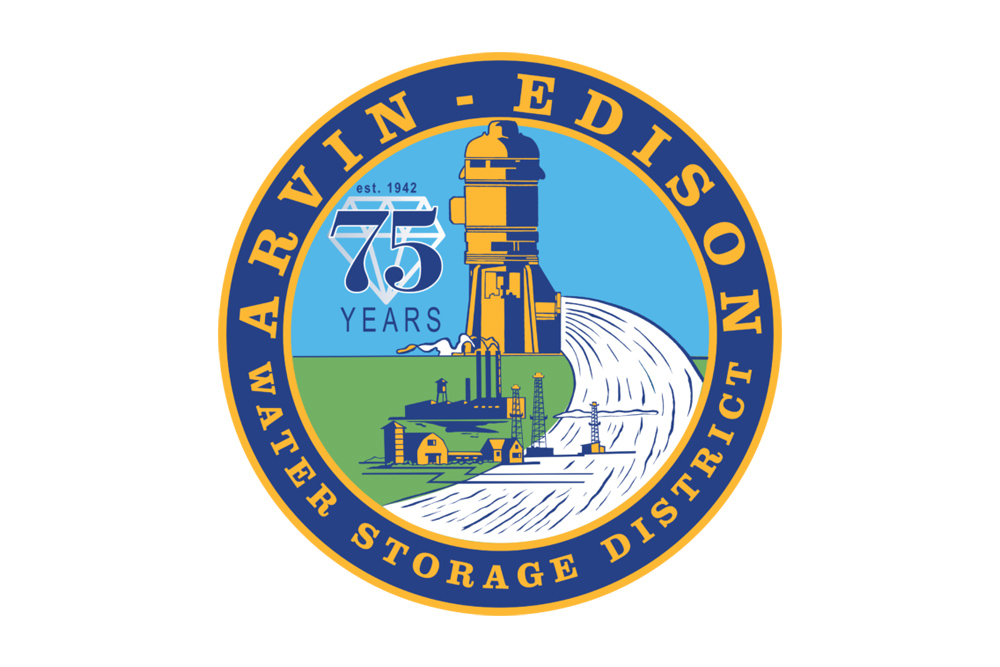 The Buena Vista Water Storage District held its board of directors meeting on Wednesday, March 18, 2020 at its Buttonwillow headquarters but with a phone-in twist. This is the first BVSWD meeting I’ve attended by teleconference. Chairman John Vidovich called it at 8:30am. It sounded like two of the board members called in as well. There was no public comment.
The Buena Vista Water Storage District held its board of directors meeting on Wednesday, March 18, 2020 at its Buttonwillow headquarters but with a phone-in twist. This is the first BVSWD meeting I’ve attended by teleconference. Chairman John Vidovich called it at 8:30am. It sounded like two of the board members called in as well. There was no public comment.
The consent calendar was approved with one item being pulled by Vidovich. Treasurer Mary Beth Brooks gave her financial report and it was approved. Engineer Andrew Bell spoke about the water supply. BV’s pipeline will help folks with little groundwater. The question was when to start the surface run, how much of an allocation and when to stop the run. It was difficult to tell for sure who was speaking but it sounded like Directors Terry Chicca and Julien Parsons were present and that would leave Directors Jeoff Wyrick and Larry Ritchie on the phone. The amount of run was decided to be half an acre foot per acre and the length of time to be 30-days. The start date has yet to be determined but it will be of benefit to pistachio growers. It was also mentioned this is subject to change depending on many things; weather being a big one.
Vidovich pulled Item 9c from the consent calendar. HECA is the name of a piece of property the district is using for recharge. The question is I believe; BV has an easement but not title to the land subjecting it to property tax. It sounded like the amount was in six figures. One thing almost all of us agree on is we pay too much in taxes; I imagine a public entity normally exempt from property tax would find it extra galling. It sounded like attorney Isaak St. Lawrence will untangle this and report back to the board.
Item 9f was also pulled from consent. General Manager Tim Ashlock said the district has found $9 million worth of pipe that might be a good investment now for future projects. Everyone agreed buying early at lower prices is good but wondered why a $9 million expenditure would be on the consent calendar. Ashlock explained it was an informational item only.
The meeting then went into closed session.
Some Thoughts on Meetings
Buena Vista meetings are traditionally short. This one was no exception. From the first sentence to “closed session” this report is less than 400 words. I don’t mind a short report but some of the flavor is lost when trying to convey by telephone what happened. I questioned Ashlock briefly before hanging up and he said they were serving individually wrapped snacks. Usually BV has a delicious cheese, meat and fruit tray or some high quality pastries. So there’s a change right there. I hope they were serving California grown nuts and raisins. It’s not right to go to an ag related event serving peanuts only.
Much of the feedback we receive comes from folks who aren’t able to attend these meetings and of course that’s who we write for. So, in an effort to be informative and not pedantic let us spend a bit of time going on about the consent calendar. As someone who has literally attended tens of thousands of meetings I can say with all honesty I really like the consent calendar. I like short meetings – at least more than I like long meetings.
There was an entity here in the Valley whose meetings I used to attend regularly. They served some of the best food I’ve had on the water meeting circuit. There are no requirements food or snacks be served but it is a nice courtesy and prevents the void, sometimes mangled thinking of low blood sugar. Anyway, the meetings lasted two days and staff was lined up four deep to give thorough reports. Reports in such detail it took two days to complete the meeting. A consent calendar could have come in handy. The meetings would have been more efficient; and not efficient for efficiency’s sake but more productive and better serving the public cause. This entity now meets one day per month and the information is more pertinent to the purpose of a public board meeting.
When I first attended a Westlands Water District meeting I was still wet behind the ears* and thought I was witnessing the board behaving as a rubber stamp. Almost all the items are passed unanimously with little to no discussion. What I was witnessing was efficiency. The details of the items were worked out in advance at committee meetings. These are public meetings but instead of staff trying to educate everyone at once the directors with the most interest and expertise in a subject evaluate the pros and cons before bringing a recommendation to the full board.
Back to consent calendars. Consent calendars don’t sweep unwanted information under the rug, nor transfer delicate items into a darkened room never to be heard from again. They take routine items and bunch them together so one vote by the board can pass the whole shooting match. Routine meaning items that don’t change much if at all from meeting to meeting. One might ask, “What keeps them from hiding things in the consent calendar?” The answer is anyone can request an item be pulled from the consent calendar and discussed separately.
Both board members and the public can request and item to be pulled from the calendar and examined in the cold light of day. This ability to look into the bowels of special districts is one reason water entities are pretty much transparent. But it takes effort from the public to educate itself on the issues impacting the water supply.
I’ll admit that’s a big task – educating oneself about water. It can be a lifelong journey. Besides the complexity of laws and regulations there are other characteristics to watch out for. One thing I’ve noticed is the difference between a water district and an irrigation district. Once a man from Madera named Denis Prosperi patiently took time to explain to me the difference. As I recall he told me if you live in an irrigation district’s boundaries and are legally registered to vote you can run for a seat on the ID’s board of directors. If you own land in a water district you can vote and run for a seat on the board of directors. Basically if you don’t live in an ID you’re out of the game and if you don’t own land in a WD you’re also out of the game for voting and office holding purposes.
This arrangement of voting powers leads to some subtler differences I’ve observed. Water Districts’ boards are made up of landowners with direct skin in the game. The votes are weighted by the amount of land owned. If we’re in a WD of 1,000 acres and you own 350 acres, you get 350 votes. You can also assign a proxy to sit on the board in your place. Let’s say you live in Porterville and for some reason you farm in Huron. Huron is in Westlands Water District so you get as many votes as you have acres. You’re a busy person and don’t have time to sit on the board but would like to have a seat at the table. You can appoint someone to run for director for you. Most often it’s an employee, relative or someone with a fiduciary responsibility to you.
ID’s often have the bigger growers represented on their boards as well. Look at Fresno ID. Portions of its boundaries include the urbanized areas of the Cities of Fresno and Clovis. FID is divided into voting districts and to my knowledge doesn’t have any at large seats. So running for director is much different if you represent a rural area or an urban area.
This difference in who can serve as a director creates a different dynamic between the board and management of a water district verses an irrigation district. But more about that in the future. By the way if I got any of this wrong please don’t hold Mr. Prosperi’s feet to the fire. I have complete confidence he told me the accurate facts, but it was like 20-years ago and I may have mixed it up a bit. Also, water district votes aren’t always strictly by acres owned. Some areas pay more for advanced infrastructure and may have an extra “bonus” to the vote; like land in this part of the district gets one and a fourth vote because it pays more. So it is possible to own more less land but have more votes. I don’t know – it’s complicated and varies from district to district.
Well, that’s it for this report. Be good to each other.
DISCLAIMER OF RESPONSIBILITY; Waterwrights strives to provide his clients with the most complete, up-to-date, and accurate information available. Nevertheless, Waterwrights does not serve as a guarantor of the accuracy or completeness of the information provided, and specifically disclaims any and all responsibility for information that is not accurate, up-to-date, or complete. Waterwrights’ clients therefore rely on the accuracy, completeness and timeliness of information from Waterwrights entirely at their own risk. The opinions expressed in this report are those of the author and do not represent any advertisers or third parties. *I was going write “green” behind the ears, but after reading it back thought better of it.
ALL RIGHTS RESERVED. Copyright 2020 by Don A. Wright
Buena Vista Water Storage District was organized in 1924 to manage the irrigation, drainage systems and water rights originally held by Miller & Lux. The district controls an average 130,000 a/f of Kern River water and approximately 21,000 a/f of supplies from the State Water Project. BVWSD is its own GSA. Board of Directors meetings are held the 3rd Wednesday of the month at district headquarters located at: 525 North Main Street, Buttonwillow, CA 93206. Phone: 661/324-1101 www.bvh20.com
 Staff – General Manager/Engineer: Tim Ashlock, Engineer Andrew Bell, Controller: Marybeth Brooks, Attorney: Robert Hartsock or Isaac St. Lawrence
Staff – General Manager/Engineer: Tim Ashlock, Engineer Andrew Bell, Controller: Marybeth Brooks, Attorney: Robert Hartsock or Isaac St. Lawrence
Board-President: John Vidovich, VP: Terry Chicca, Secretary: Jeof Wyrick, Julien Parsons, Larry Ritchie
































